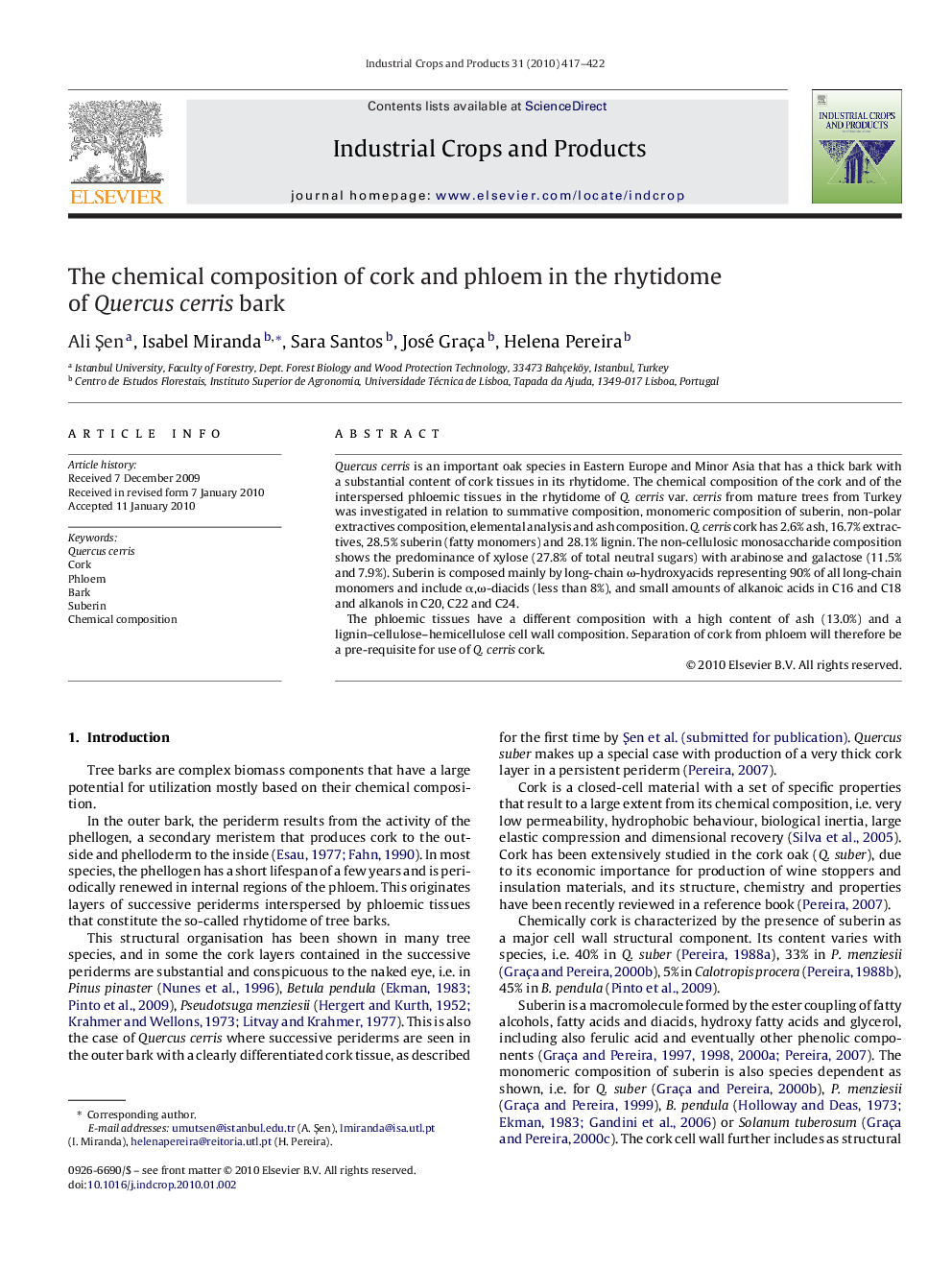| Article ID | Journal | Published Year | Pages | File Type |
|---|---|---|---|---|
| 4514827 | Industrial Crops and Products | 2010 | 6 Pages |
Quercus cerris is an important oak species in Eastern Europe and Minor Asia that has a thick bark with a substantial content of cork tissues in its rhytidome. The chemical composition of the cork and of the interspersed phloemic tissues in the rhytidome of Q. cerris var. cerris from mature trees from Turkey was investigated in relation to summative composition, monomeric composition of suberin, non-polar extractives composition, elemental analysis and ash composition. Q. cerris cork has 2.6% ash, 16.7% extractives, 28.5% suberin (fatty monomers) and 28.1% lignin. The non-cellulosic monosaccharide composition shows the predominance of xylose (27.8% of total neutral sugars) with arabinose and galactose (11.5% and 7.9%). Suberin is composed mainly by long-chain ω-hydroxyacids representing 90% of all long-chain monomers and include α,ω-diacids (less than 8%), and small amounts of alkanoic acids in C16 and C18 and alkanols in C20, C22 and C24.The phloemic tissues have a different composition with a high content of ash (13.0%) and a lignin–cellulose–hemicellulose cell wall composition. Separation of cork from phloem will therefore be a pre-requisite for use of Q. cerris cork.
